


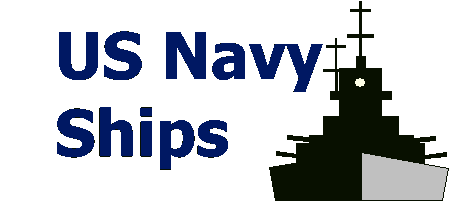
SSN-774 Virginia-class
NSSN New Attack Submarine
Centurion
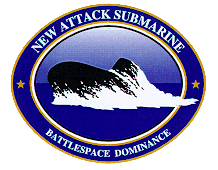 The Secretary of Defense in his October 1993 bottom-up review determined that production of the Seawolf class submarine would cease with the third submarine, and that the Navy should develop and build a new attack submarine as a more cost-effective follow-on to the Seawolf class, with construction beginning in fiscal year 1998 or 1999 at Electric Boat. The New Attack Submarine is the first U.S. submarine to be designed for battlespace dominance across a broad spectrum of regional and littoral missions as well as open-ocean, "blue water" missions. The program design goal is to produce a submarine flexible enough to carry out seven very different missions:
The Secretary of Defense in his October 1993 bottom-up review determined that production of the Seawolf class submarine would cease with the third submarine, and that the Navy should develop and build a new attack submarine as a more cost-effective follow-on to the Seawolf class, with construction beginning in fiscal year 1998 or 1999 at Electric Boat. The New Attack Submarine is the first U.S. submarine to be designed for battlespace dominance across a broad spectrum of regional and littoral missions as well as open-ocean, "blue water" missions. The program design goal is to produce a submarine flexible enough to carry out seven very different missions:
- Covert Strike by launching land-attack missiles from vertical launchers and torpedo tubes;
- Anti-Submarine Warfare with an advanced combat system and a flexible payload of torpedoes;
- Anti-Ship Warfare, again, using the advanced combat system and torpedoes;
- Battle Group Support with advanced electronic sensors and communications equipment;
- Covert Intelligence, Surveillance and Reconnaissance, using sensors to collect critical intelligence and locate radar sites,
missile batteries and command sites as well as to monitor communications and track ship movements;
- Covert Minelaying against enemy shipping; and
- Special Operations, including search and rescue, reconnaissance, sabotage, diversionary attacks, and direction of fire support
and strikes.
The New Attack Submarine is designed for multi-mission operations and enhanced
operational flexibility. SEAWOLF (SSN-21)-Class quieting has been incorporated in a
smaller hull while military performance has been maintained or improved. Compared with the Seawolf, the NSSN is slower, carries fewer weapons, and is less capable in diving
depth and arctic operations. On the other hand, the NSSN is expected to be as quiet as the Seawolf, will incorporate a vertical launch system and have improved surveillance as well as special operations characteristics to enhance littoral warfare capability. While the 688-I submarines are noisier than the improved Russian Akula class, the Seawolf is quieter than Akula and the upcoming Russian SSN-P-IX class. The primary design driver for the NSSN is acoustic quietness equal to that of the Seawolf, even at the cost of reducing maximum top speed.
With a focus on the littoral battlespace, the New Attack Submarine has improved magnetic stealth, sophisticated surveillance capabilities, and Special Warfare enhancements.
Operating in the shallow waters of littoral areas imposes a different accoustic environment for which previous submarinen classes were optimized. As reported in ONR Ocean Science and Engineering Newsletter # 2 (Feb. 1997) it is well known that as a result of the selective frequency effect of the shallow-water sound channel, a band of frequencies exist in which the propagation is enhanced (i.e., the transmission loss is relatively small). This "optimum frequency" regime arises from the combined effect of the volume attenuation at the higher frequencies and the loss due to interaction with the sea bottom at the lower frequencies.
Because of the proximity of the boundaries in shallow water, multipath transmission and multi-angle scattering from the sea bottom are concomitant characteristics of shallow-water acoustic reverberation. Consequently, long-range reverberation in shallow water is far more complex than the deep-water case. Because of interaction with the bottom, long range sound propagation in shallow water is characterized by separation of the constituent modes as a result of the differences in modal group velocities. This results in elongated, low amplitude signals.
Further, because of the non-uniform effects of the interaction--e.g., the higher-angle modes suffer greater attenuation--only several modes may be needed to characterize the sound field. Hence, mode filtering is a useful approach for investigating multipath fields in shallow water.
The spatial structure of the accoustic signal in the waveguide formed by the surface and bottom in shallwo water is significantly different from the that in the free field of deep water. Hence, due to modal interference in a waveguide, conventional beamforming techniques cannot be used. Several on mode filtering methods are possible source ranging and depth estimation in the shallow water wave guide. Signals of several modes may be separated, and after correction for arrival time and phase, these filtered normal modes may be recombined to obtain a compressed and enhanced signal.
In some shallow water regions very strong and sharp summer thermoclines exist, and are
accompanied by conspicuous internal waves. Anomalous attenuation of sound between 300 Hz and 1200 Hz is associated with these conditions, with very large variations (as much as 30 dB at some frequencies) in the frequency response of the transmission loss. These abnormally large attenuation can be attributed to internal wave-induced acoustic mode coupling. In particular, the internal waves cause a transfer of energy into the higher-order modes, which, since they
interact more with the lossy bottom, leads to a frequency-dependent energy loss (or attenuation) in the sound wave.
| Los Angeles | Seawolf | NSSN |
| Length: | 360 feet (110 meters) | 353 feet (108 meters) | 377 ft. (115 m) |
| Beam: | 33 feet (10 meters) | 40 ft. (12.2 m) | 34 ft. (10.4 m) |
| Submerged displacement (long tons): | 6,900 | 9,100 | 7,800 |
| Submerged speed: | 25+knots | 25+knots | 25+knots |
| Depth: | 800+ ft. (250 m) | 800+ ft. (250 m) | 800+ ft. (250 m) |
| Weapons
|
| Mk 48 ADCAP torpedoes | x | x | x |
| Tomahawk cruise missiles | x | x | x |
| Mk60 Captor mines | x | x | x |
| Advanced mobile mines | x | x | x |
| Unmanned underwater vehicles | -- | -- | x |
The New Attack Submarine is engineered for maximum design flexibility, responsiveness to changing missions and threats, and affordable insertion of new technologies to ensure that it will continue to be the right submarine well into the 21st Century. Integrated electronic systems with Commercial-Off-The-Shelf (COTS) components facilitate state-of-the-art
technology introduction throughout the life of the class and avoid unit obsolescence.
The Navy has never attempted such a large-scale integration effort on a submarine. While the BSY-1 and BSY-2 systems did have some level of integration, the NSSN combat system will have to be totally integrated. Both the BSY-1 combat system for the Improved Los Angeles-class and the BSY-2 combat system for the Seawolf-class submarines had problems that resulted in late delivery and increased costs.
The Command, Control, Communications, and Intelligence (C3I) electronics packages also promote maximum flexibility for growth and upgrade. Coupled with the Modular Isolated Deck Structure (MIDS) and open-system architecture, this approach results in a lower cost and effective, command and control structure for fire control, navigation, electronic warfare, and communications connectivity.
The New Attack Submarine's sonar system is state-of-the-art and has more processing power than today's entire submarine fleet combined to process and distribute data received from its spherical bow array, high-frequency array suite, dual towed arrays, and flank array suite.
The New Attack Submarine's sail configuration houses two new photonics masts for improved imaging functions, and improved electronics support measures mast, and multi-mission masts that cover the frequency domain for full-spectrum, high data-rate communications. The sail is also designed for future installation of a special mission-configurable mast for enhanced flexibility and warfighting performance.
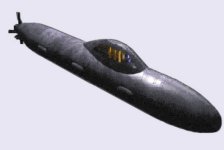 The VIRGINIA Class submarine program has been designed with long-term technological innovation in mind. The built-in flexibility of VIRGINIA, including incorporation of modular design techniques, open architecture, and COTS components, allows for technological insertion and innovation. As an example of the flexibility inherent in the design of VIRGINIA, the Navy anticipates placing an advanced sail on hulls 5-6 of the VIRGINIA Class. The new sail shape and size might well provide the required volume for advanced future payloads.
The VIRGINIA Class submarine program has been designed with long-term technological innovation in mind. The built-in flexibility of VIRGINIA, including incorporation of modular design techniques, open architecture, and COTS components, allows for technological insertion and innovation. As an example of the flexibility inherent in the design of VIRGINIA, the Navy anticipates placing an advanced sail on hulls 5-6 of the VIRGINIA Class. The new sail shape and size might well provide the required volume for advanced future payloads.
The new attack submarine is armed with a variety of weapons. It carries the most advanced heavyweight torpedoes, mines, Tomahawk cruise missiles, and Unmanned Undersea Vehicles (UUVs) for horizontal launch. In addition, Tomahawk missiles are carried in vertical launch tubes. The New Attack Submarine also features an integral Lock-Out/Lock-In chamber for
special operations and can host Special Operations Forces' underwater delivery vehicles.
Reducing acquisition and life-cycle costs is a major objective of the New Attack Submarine design and engineering process. Cost avoidance is anticipated through the application of concurrent engineering design/build teams, computer-aided design and electronic visualization tools, system simplification, parts standardization, and component elimination. These innovations are intended to ensure that the ship is affordable in sufficient numbers to satisfy America's future nuclear attack submarine force level requirements.
The New Attack Submarine Program Office is applying the lessons learrned from successful government and industry programs of similar scope and complexity to improve producibility and lower costs. Integrated Product and Process Development (IPPD) teams bring the combined experience of the shipbuilders, vendors, designers and engineers, and ship operators to bear
on the ship design. The early involvement of production people on these teams is intended to provide a match between the design and the shipbuilder's construction processes and facilites, a smoother transition from design to production, and reduction in the number of changes during construction. The ship is designed using a state-of-the-art digital database, which allows
members of the IPPD teams to work from a single design database and provides three-dimensional electronic mockups throughout the design process.
The Milestone I COEA examined twelve alternatives. The JROC reviewed and validated the key performance parameters (KPPs) for the selected new attack submarine design. The Milestone I DAB approved NSSN to enter Phase I in August 1994. The Milestone II DAB approved NSSN to enter the Demonstration and Validation Phase on June 30, 1995.
A number of systems that will be part of NSSN underwent testing in FY97. TB-29
towed array and the ADCAP Torpedo Block Upgrade III completed OPEVAL in
September 1997. The Submarine Advanced Tomahawk Weapons Control System
(Sub-ATWCS), Ring-laser Gyro Navigator and Doppler Sonar Velocity Log underwent
operational testing as well. A scale model of the propulsor was tested. When USS
SEAWOLF went to sea, the following equipment common or similar to NSSN were
observed; propulsor, wide aperture array (WAA), impressed current cathodic protection
system, and active shaft grounding system.
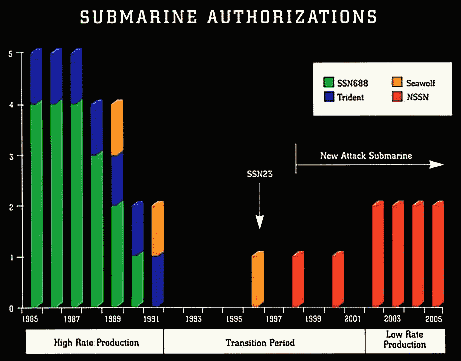
The Electric Boat Corporation of Connecticut is the lead design authority for the New Attack Submarine [NAS]. The build of the first submarine is scheduled to start at the company's Groton Shipyard in 1998, and funding has been allocated for the second and third submarines.
The 1993 Bottom Up Review decided not to consolidate all carrier and submarine construction in one shipyard due to concerns "about the resulting loss of competition as well as other long-term defense industrial base and national security implications that would result from having only one provider for two key classes of naval vessels..." The BUR directed construction of CVN 76 at Newport News Shipbuilding and the New Attack Submarine at Groton. The Navy's original plan approved in May 1995 was to build one ship in fiscal year 1998, a second ship in fiscal year 2000, and two ships per year beginning in fiscal year 2002--all at Electric Boat Corporation, Groton, Connecticut.
However, after the CVN 76 construction contract was awarded in FY 95, Congress questioned the BUR policy concerning New Attack Submarine. Congress rejected the Navy's plan, directing that the NAS would not be a serially-produced new class of nuclear attack submarines and further directing that Newport News Shipbuilding would participate in the future construction of such submarines. Public Law 104-106 directed the Navy to start construction of an NSSN at Newport News Shipbuilding and Drydock Company (Newport News) in 1999 and submit a plan for building four NSSNs between fiscal year 1998 and 2001, two of which were to be built by Electric Boat (one in 1998 and one in 2000) and two by Newport News (one in 1999 and one in 2001). According to the Navy, this change increased the estimated cost of developing and building 30 NSSNs by $3 billion. The Congressional plan stated that the best designs from each
shipyard would form the basis for serial production of the first of a new class of next-generation submarines beginning in 2003 (amended to 2002 by the National Defense Authorization Act for Fiscal Year 1997 (Public Law 104-201)).
In December 1996, Electric Boat and Newport News Shipbuilding proposed to construct New Attack Submarines as a team, rather than as competitors. This wase consistent with the Congressional
direction to involve both nuclear submarine shipbuilders; to foster cooperation between the shipbuilders on both construction and design improvements; and to facilitate the cross pollination of knowledge and the insertion of advanced technology. Both shipbuilders would
use Electric Boat's digital design database to construct New Attack Submarines and each shipbuilder would specialize in certain assemblies, thereby approaching single learning curve
efficiencies. Both would initially deliver alternating ships with Electric Boat delivering the lead fiscal year 1998 submarine.


The fiscal year 1997 budget requested $296 million for the design and component construction of the first New Attack Submarine in fiscal year 1998. As allowed by the fiscal year 1996 Department of Defense Authorization Act, the funding required to finance construction of the fiscal years 1999 and 2001 submarines, which would include $504 million in fiscal year 1997, was not included in the President's FY97 Budget request. The Navy's budget request for fiscal year 1998 was premised upon having the two shipyards team to produce not only the first
four NASs, beginning construction in fiscal years 1998, 1999, 2001 and 2002 respectively, but all NASs thereafter.
The FY 1999 budget request included $1.5 billion for the construction of the second of four New Attack Submarines plus $0.5B for advance procurement for the third ship, that are part of the unique single contract and construction teaming plan approved by Congress in 1997.
The January 1997 Operational Assessment [OA] report indicated high risk existed in several programmatic areas, since formal plans or funding didn’t exist for the external communications system, the towed array, mines or ASUW missiles. As a result of DoD funding shortfalls, NSSN and supporting programs faced significant down-scoping which could reduce the effectiveness
of the submarine. Technical risks were found in high data rate antennas and in other areas
addressed in the classified version of this report. DOT&E concured with the OA report. Since then, funding has been obtained and a program started for an improved towed array. The Navy has identified and funded a number of technological improvements for insertion into different NSSN hulls as the improvements become available, and is studying others, which will be implemented if funding becomes available. In October 1997, DIA released a new STAR. The impact of
this on NSSN performance margin will require additional assessment.
In 1997 GAO found that the NSSN program is not likely to meet the objective
of producing a submarine that is significantly less costly than the Seawolf. Based on Navy estimates for a 30-ship, single shipbuilder program, the Seawolf's average acquisition cost was estimated to be about $1.85 billion compared to the NSSN's estimate of about $1.5 billion, and based on a 30-ship, two shipbuilder program, the Navy's current estimated acquisition cost for the fifth ship of the NSSN class had risen from about $1.5 billion to about $1.8 billion as of
March 1996.
The existing DOD guidance calls for a force of 50 attack submarines, although some studies have called for raising the number of subs to as many as 72. Existing plans are sufficient to meet the goal of 50 boats, although higher numbers would require modification to these plans. According to Navy secretary Richard Danzig, as of October 1999 the Joint Chiefs of Staff were studying options for increasing the size and capability of the submarine force. The three options under review include by converting older Ohio-class SSBN submarines to so-called SSGNs at a cost of $420 million; refueling and extending by 12 years the service life of perhaps eight Los Angeles-class (SSN 688) subs at a cost per copy of $200 million; or building new Virginia-class (SSN 774) subs at a rate of at least four over the next five years, at a cost of roughly $2 billion per boat. The FY2000 Defense Authorization bill requires the Navy to study converting four of the oldest Tridents to the new SSGN configuration.
The JCS Submarine Force Structure Study, completed in November 1999, concluded that the optimal force structure would be 68 attack submarines by 2015 and 76 by 2025, with the minimum being at least 55 by 2015 and 62 by 2025. The report called for at least 18 Virginia-class submarines by 2015. The current Navy acquisition plan calls for ordering one per year through 2006, and two a year after that. The proposal in the Force Structure Study calls for the Navy to go to two a year in 2004, two years early, and to buy three in 2008. To meet the goal for 18 Virginia class boats by 2015 and to meet the minimum goal of 62 boats by 2025 would require construction of roughly three subs a year. This would require an additional $4 billion a year for perhaps 14 years -- $56 billion more than the currently planned construction rate.
As of mid-2000 the acquisition and construction strategies for the procurement of the first four Virginia -class submarines appeared to be yielding positive results to date. However, the two shipbuilders had not yet completed the critical test of joining sections constructed in two separate shipbuilder facilities. In addition, the subsystems being developed by a number of subcontractors required continued oversight regarding cost and schedule excursions.
The Senate Armed Services committee recommended in July 2000 a provision that would authorize the Secretary of the Navy to enter into a contract for up to a total of five Virginia -class submarines between fiscal year 2003 and fiscal year 2006. The provision would authorize the Secretary to continue the shipbuilder teaming arrangement authorized in the National Defense Authorization Act for Fiscal Year 1998 (Public Law 105 85). The Committedd required the Secretary of Defense to submit a report to the congressional defense committees with submission of the fiscal year 2002 President's budget to include a plan for maintaining at least 55 attack submarines through 2015, and a plan for achieving a force of 18 Virginia -class submarines
by 2015; and assessments of savings to the program of production rates of two submarines per year, if that rate were to begin in fiscal year 2004 and construction were to continue at that rate in fiscal year 2006 and thereafter.
Specifications
|
| Contractors |
General Dynamics Electric Boat Division [lead design authority]
Newport News Shipbuilding
Lockheed Martin Federal Systems (Combat System)
Raytheon Electronics Systems (Combat System)
|
|
Power Plant | One S9G pressurized water reactor
??,000 shp, one shaft with
pumpjet propulsor
Improved Performance Machinery Program Phase III
one secondary propulsion submerged motor
|
|
Displacement | 7,800 tons submerged
|
|
Length | 377 feet
|
|
Draft | 32 feet
|
|
Beam | 34 feet
|
|
Speed | 25+ knots submerged
|
|
Depth | Greater than 800 feet
|
|
Horizontal Tubes | Four 21" Torpedo Tubes
|
|
Vertical Tubes | 12 Vertical Launch System Tubes
|
|
Weapons | 38 weapons, including:
Vertical Launch System
Tomahawk Cruise Missiles
Mk 48 ADCAP Heavyweight Torpedoes
Advanced Mobile Mines
Unmanned Undersea Vehicles
|
|
Special Warfare |
Dry Deck Shelter
Advanced SEAL Delivery System
|
|
Sonars |
Spherical active/passive arrays
Light Weight Wide Aperture Arrays
TB-16, TB-29, and future towed arrays
High-frequency chin and sail arrays
|
|
Countermeasures | 1 internal launcher (reloadable 2-barrel)
14 external launchers
|
|
Crew | 113 officers and men
|
| Total Program |
30 systems
Total program cost (TY$) $67034M
Average unit cost (TY$) $2110M
|
| Status |
Full-rate production 1QFY07
|
Ships
|
| Name |
Number |
Builder |
Homeport |
Ordered |
Commissioned |
Stricken |
| Virginia | SSN-774 | Electric Boat | | Jun 1998 | Jun 2004 | |
| Texas | SSN-775 | Newport News
| | Jun 1998 | Jun 2005 | |
| Hawaii | SSN-776 | Electric Boat | | Jun 1998 | Jan 2007 | |
| SSN-777 | Newport News
| | Jun 1998 | Jun 2008 | |
| SSN-778 | | | 2004 | 2010 | |
| SSN-779 | | | 2004 | 2010 | |
| SSN-780 | | | 2005 | 2011 | |
| SSN-781 | | | 2005 | 2011 | |
| SSN-782 | | | 2006 | 2012 | |
| SSN-783 | | | 2006 | 2012 | |
| SSN-784 | | | 2007 | 2013 | |
| SSN-785 | | | 2007 | 2013 | |
| SSN-786 | | | 2008 | 2014 | |
| SSN-787 | | | 2008 | 2014 | |
| SSN-788 | | | 2009 | 2015 | |
| SSN-789 | | | 2009 | 2015 | |
| SSN-790 | | | 2010 | 2016 | |
| SSN-791 | | | 2010 | 2016 | |
| SSN-792 | | | 2011 | 2017 | |
| SSN-793 | | | 2011 | 2017 | |
| SSN-794 | | | 2011 | 2017 | |
| SSN-795 | | | 2012 | 2018 | |
| SSN-796 | | | 2012 | 2018 | |
| SSN-797 | | | 2012 | 2018 | |
| SSN-798 | | | 2013 | 2019 | |
| SSN-799 | | | 2013 | 2019 | |
| SSN-800 | | | 2013 | 2019 | |
| SSN-801 | | | 2014 | 2020 | |
| SSN-802 | | | 2014 | 2020 | |
| SSN-803 | | | 2014 | 2020 | |
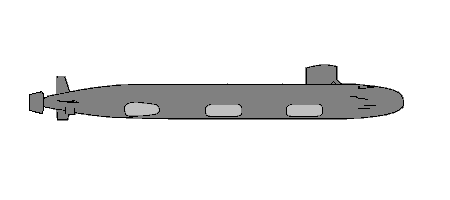
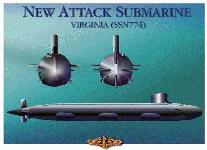
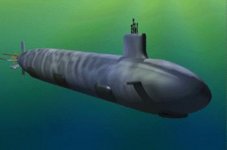
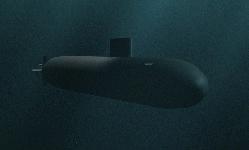
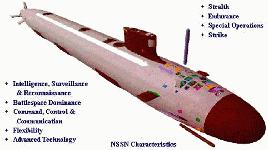
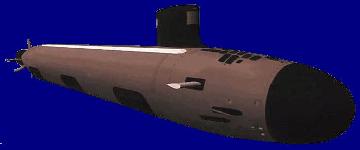
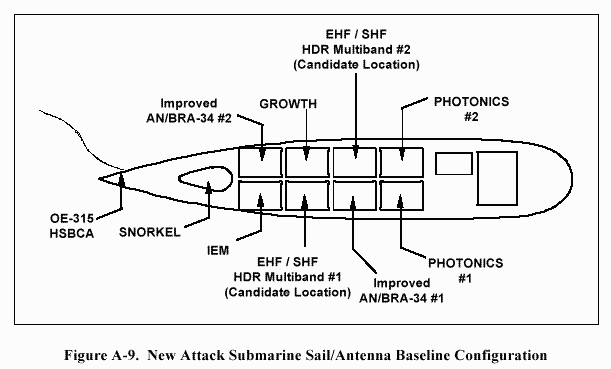
Sources and Resources
- New Attack Submarine Home Page
- The New Attack Submarine @ N87
- New Attack Submarine FY97 DOT&E Report
- General Accounting Office Reports
- NSSN ATTACK SUBMARINE @ Naval Technology
- NSSN: SUBMARINE DESIGN STEPS INTO THE FUTURE by Jonathan M. Ross, P.E.
- NAVY REPORT ON NEW ATTACK SUBMARINE Mr. D'AMATO -Congressional Record (Senate - July 21, 1992)
- CENTURION ATTACK SUBMARINE Mr. D'AMATO - Congressional Record (Senate - August 06, 1992)
- `Navy Report on the New Attack Submarine,' or `Lennon Report' Mr. D'AMATO Congressional Record (Senate - August 12, 1992)
- THE CENTURION ATTACK SUBMARINE - Acquisition Decision Memorandum. Mr. D'AMATO Congressional Record (Senate - September 08, 1992)
- COST COMPARISON BETWEEN `CENTURION' AND `SEAWOLF' Mr. D'AMATO Congressional Record (Senate - November 17, 1993)
- THE `CENTURION' Mr. D'AMATO Congressional Record (Senate - September 13, 1994)
- Navy's submarine modernization plan James Courter and Loren Thompson Sea Power Magazine / Congressional Record JUNE 7, 1995
- Should Further U.S. Submarine Production Be Postponed? RB-7102 RAND National Defense Research Institute
- New Attack Submarine 18 March 1997 House Military Procurement Subcommittee
- The New Attack Submarine -- CDI fact sheet, J. Andrew Byers, 2 August 1996.
- The New Attack Submarine - Navy Public Affairs Library
- New Attack Submarine: More Knowledge Needed to Understand Impact of Design Changes. NSIAD-98-38. April 30, 1998.
- New Attack Submarine: Program Status (Letter Report, 12/03/96, GAO/NSIAD-97-25)
- Navy Shipbuilding Programs: Nuclear Attack Submarine Issues (Testimony, 05/16/95, GAO/T-NSIAD-95-162)
- Attack Submarines: Alternatives for a More Affordable SSN Force Structure (Chapter Report, 10/13/94, GAO/NSIAD-95-16)
- Navy Ships: Lessons of Prior Programs May Reduce New Attack Submarine Cost Increases and Delays (Letter Report, 10/20/94, GAO/NSIAD-95-4)
- DEF-05 Cancel the New Attack Submarine CBO Deficit Reduction Options
- 0603561N Advanced Submarine System Development FY98 R&D Budget Request
- 0604558N New Design SSN FY98 R&D Budget Request
- The Shadow in the Shallows: A Vision for the Littoral Attack Submarine Lee Shannon, MIDN 1/C USNR
- GENERAL DYNAMICS AND NEWPORT NEWS SHIPBUILDING SIGN TEAMING AGREEMENT FOR CONSTRUCTION OF NEW ATTACK SUBMARINE - February 25, 1997
- DARPA AND NAVY TO STUDY FUTURE SUBMARINE PAYLOADS August 27, 1998
- SECRETARY OF THE NAVY NAMES NEW ATTACK SUBMARINE CLASS September 10, 1998
- Virginia class next-generation attack submarine MEMORANDUM FOR CORRESPONDENTS -- October 2, 1998 -- Secretary of the Navy John Dalton announced September 10th his decision to name the lead ship the USS Virginia (SSN 774).
- SECRETARY OF THE NAVY NAMES NEW ATTACK SUBMARINE USS TEXAS November 13, 1998
- The Virginia Class—A New Submarine for the 21st Century by Patrick Connor NAVSEA's Deckplate Jan-Feb 1999 -- The military performance of the Virginia Class submarine will be comparable to that of the Seawolf Class, with significant improvement in littoral warfare capabilities and considerably less cost.
- The VIRGINIA Class America's Next Submarine by Barbara Graves and Edward Whitman Undersea Warfare Spring 1999 Vol. 1, No. 2
- "Water Balloon" Shoots Weapons In Future Launching System Undersea Warfare Spring 1999 Vol. 1, No. 3 -- Assuming no setbacks, the present planning schedules show availability of EES shipboard components starting in FY03, for installation on the fourth Virginia-class SSN, with at-sea system tests in 2006.
- FIRST VIRGINIA CLASS SUBMARINE KEEL LAYING CEREMONY HELD September 1, 1999 --- A keel laying ceremony for the lead ship in the Navy's new attack submarine class will be held Thursday, Sept. 2 at noon EDT. The ceremony for VIRGINIA (SSN 774) will be hosted by Electric Boat at their Quonset Point Facility in North Kingstown, R.I.
- Keel laid for first Virginia Class nuclear attack submarine NAVSEA Wire Service 99-25 (September 9, 1999) A keel-laying ceremony for the future USS Virginia (SSN 774) was hosted on Sep. 2 by General Dynamics Electric Boat Division at their Quonset Point Facility in North Kingstown, R.I. The Virginia is the lead ship in the Navy’s new attack submarine class.
- USS Hawaii submarine named NavNews 17 April 2000 - The third Virginia-class submarine, USS Hawaii (SSN 776), is projected to be commissioned in January 2007.
- SUBMARINE OF THE FUTURE DEFENSE SCIENCE BOARD July 1998
http://www.fas.org/man/dod-101/sys/ship/nssn.htm
Maintained by Robert Sherman
Originally created by John Pike
Updated Sunday, October 15, 2000 10:57:42 AM
 The VIRGINIA Class submarine program has been designed with long-term technological innovation in mind. The built-in flexibility of VIRGINIA, including incorporation of modular design techniques, open architecture, and COTS components, allows for technological insertion and innovation. As an example of the flexibility inherent in the design of VIRGINIA, the Navy anticipates placing an advanced sail on hulls 5-6 of the VIRGINIA Class. The new sail shape and size might well provide the required volume for advanced future payloads.
The VIRGINIA Class submarine program has been designed with long-term technological innovation in mind. The built-in flexibility of VIRGINIA, including incorporation of modular design techniques, open architecture, and COTS components, allows for technological insertion and innovation. As an example of the flexibility inherent in the design of VIRGINIA, the Navy anticipates placing an advanced sail on hulls 5-6 of the VIRGINIA Class. The new sail shape and size might well provide the required volume for advanced future payloads.




 The Secretary of Defense in his October 1993 bottom-up review determined that production of the Seawolf class submarine would cease with the third submarine, and that the Navy should develop and build a new attack submarine as a more cost-effective follow-on to the Seawolf class, with construction beginning in fiscal year 1998 or 1999 at Electric Boat. The New Attack Submarine is the first U.S. submarine to be designed for battlespace dominance across a broad spectrum of regional and littoral missions as well as open-ocean, "blue water" missions. The program design goal is to produce a submarine flexible enough to carry out seven very different missions:
The Secretary of Defense in his October 1993 bottom-up review determined that production of the Seawolf class submarine would cease with the third submarine, and that the Navy should develop and build a new attack submarine as a more cost-effective follow-on to the Seawolf class, with construction beginning in fiscal year 1998 or 1999 at Electric Boat. The New Attack Submarine is the first U.S. submarine to be designed for battlespace dominance across a broad spectrum of regional and littoral missions as well as open-ocean, "blue water" missions. The program design goal is to produce a submarine flexible enough to carry out seven very different missions:









